In the second of two photo essays from Varanasi India we discover the cremation rituals at the burning ghats on the banks of the Ganges river. Read the first article Life in Varanasi India: Ganga Aarti to see how Hindus worship the river in the Ganga Aarti ceremonies.
Warning: this article contains images of human cremations and some may find these images upsetting.
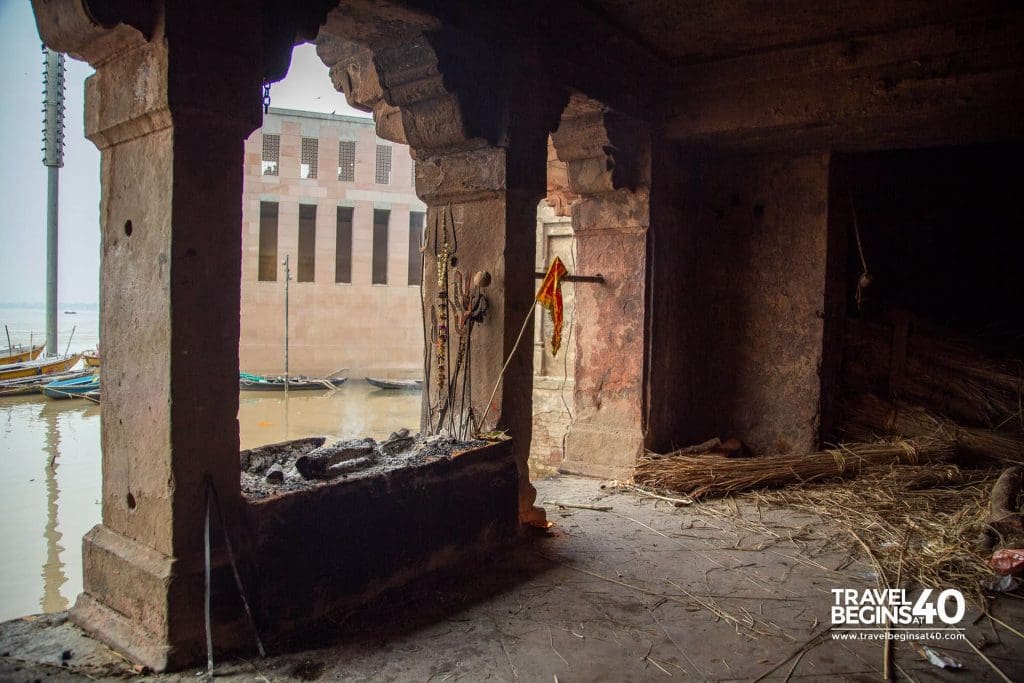
Cremations at the Burning Ghats in Varanasi
The holy city of Varanasi sits on the banks of the Ganges river in Northern India. It is probably most famous for its cremation rituals performed at the burning ghats along the riverbank. Hindus bring their deceased relatives from all over India to perform cremations in Varanasi, believing that cremation in Varanasi will free them from the cycle of rebirth.
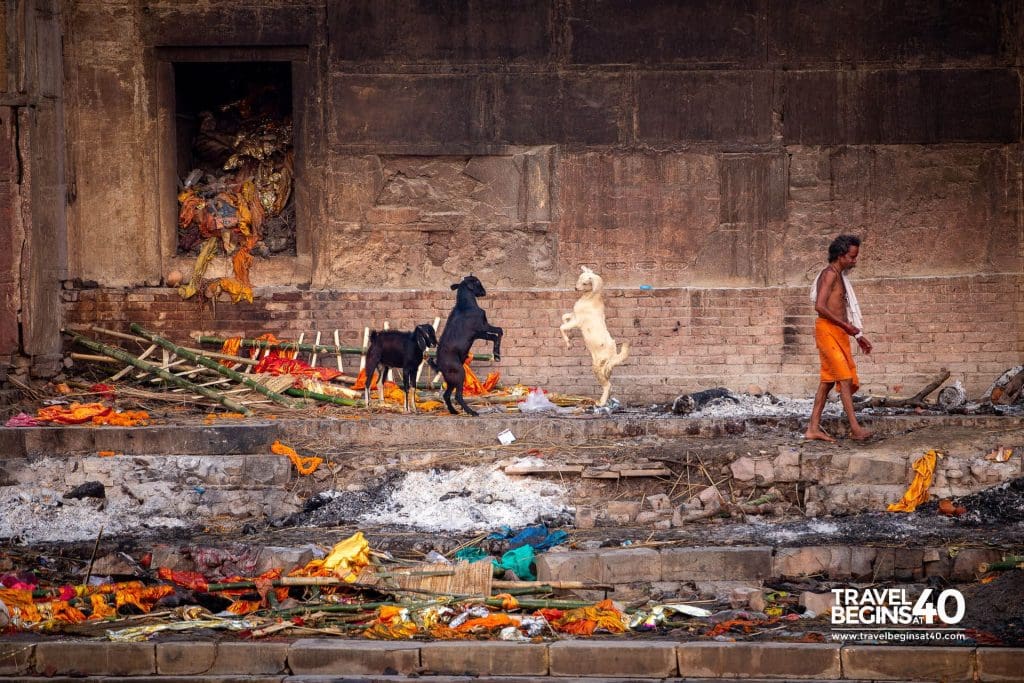
The Most Desirable Place to Die
Varanasi is home to many hospices, where the elderly and sick come to live out their final days to ensure they pass away in the holy city.
Varanasi Cremation Process
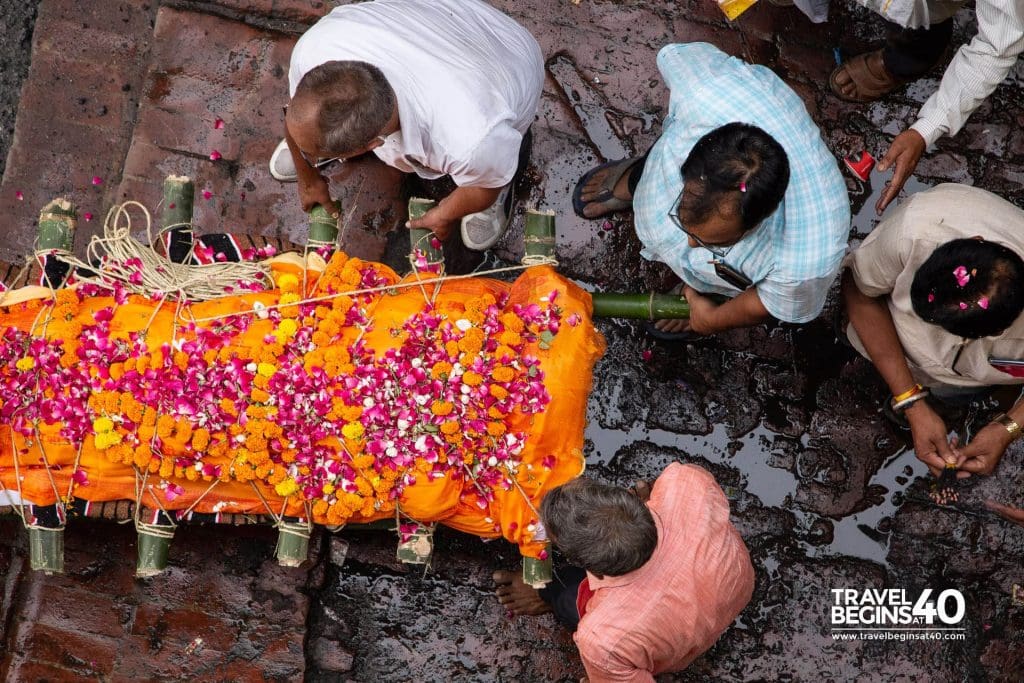
When bodies arrive at the ghat they are wrapped in cloth and topped with flowers, then on a bamboo stretcher they are taken to be washed in the water. After washing the body is brought up to an area to be prepared for the cremation.
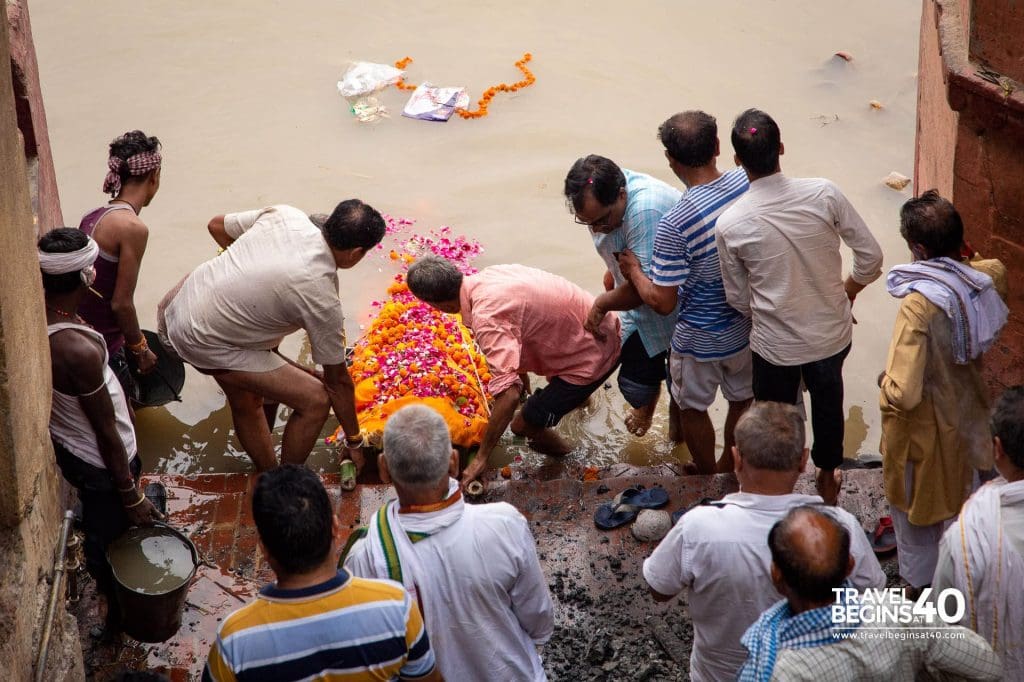
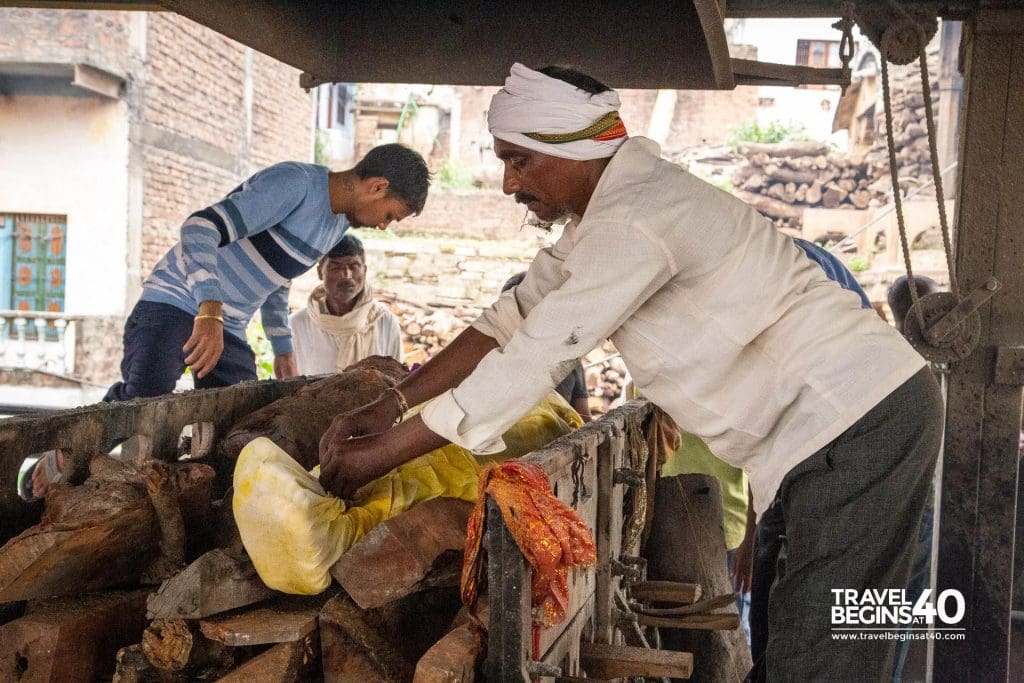
Once the wood is in place the body is ready to light. A close male relative would first shave their head to prepare for the ritual and dress in traditional white robes. They walk down the steps to the eternal flame, used to light every cremation pyre for centuries, lights some dry grass to bring the flame to the pyre.
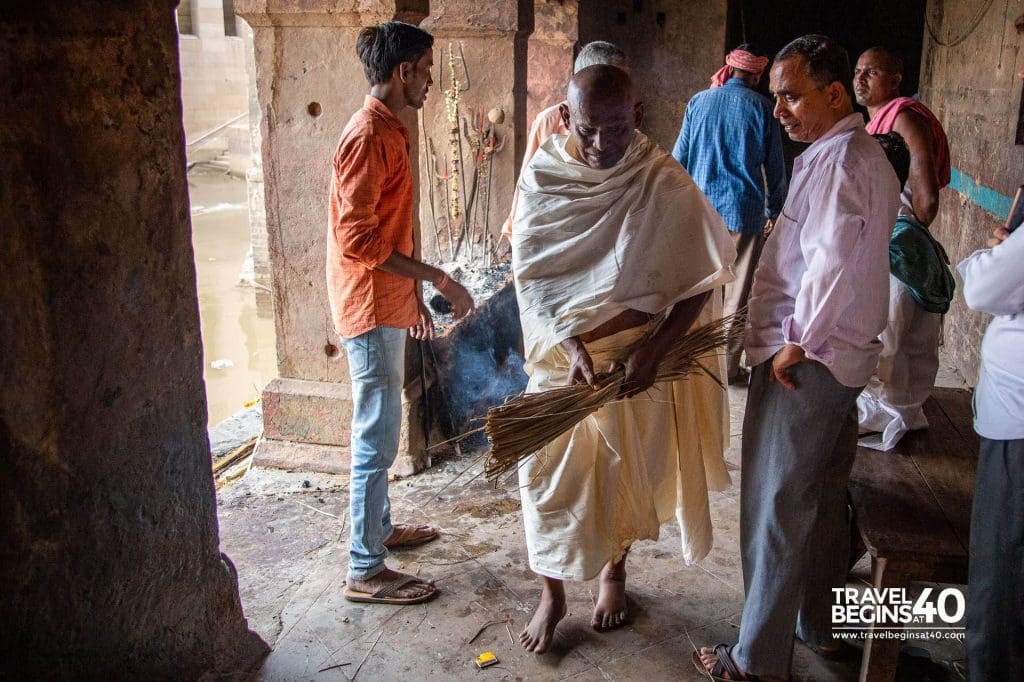
The relative circles the funeral pyre while reciting a chant and once done will light the wood to start the cremation. Volunteer workers are on hand to assist with the process, many from the lowly “untouchable” caste.
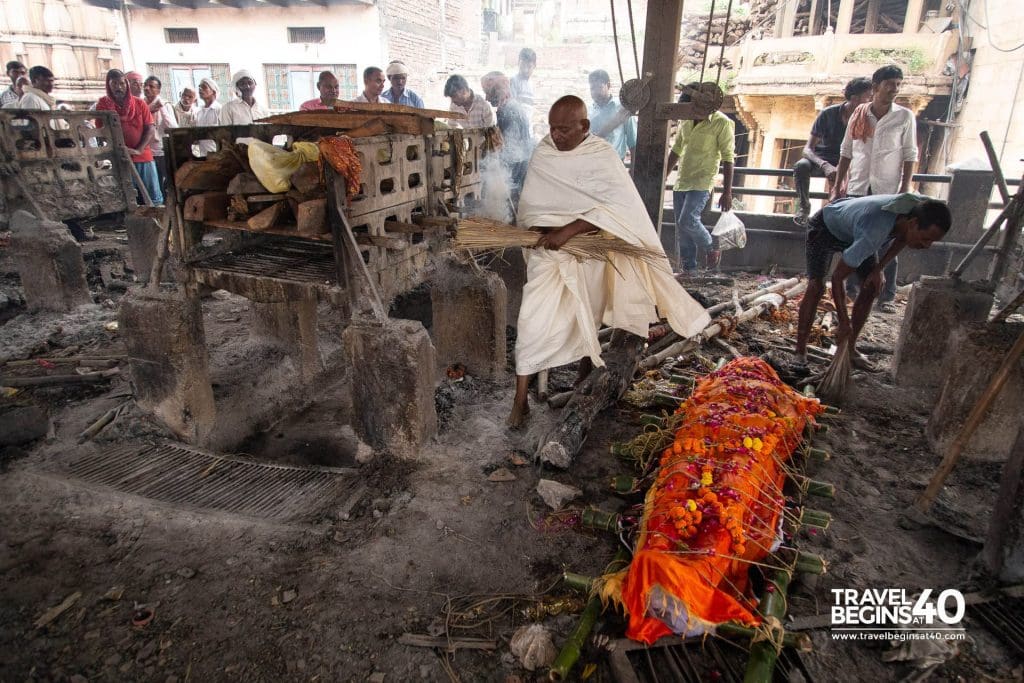
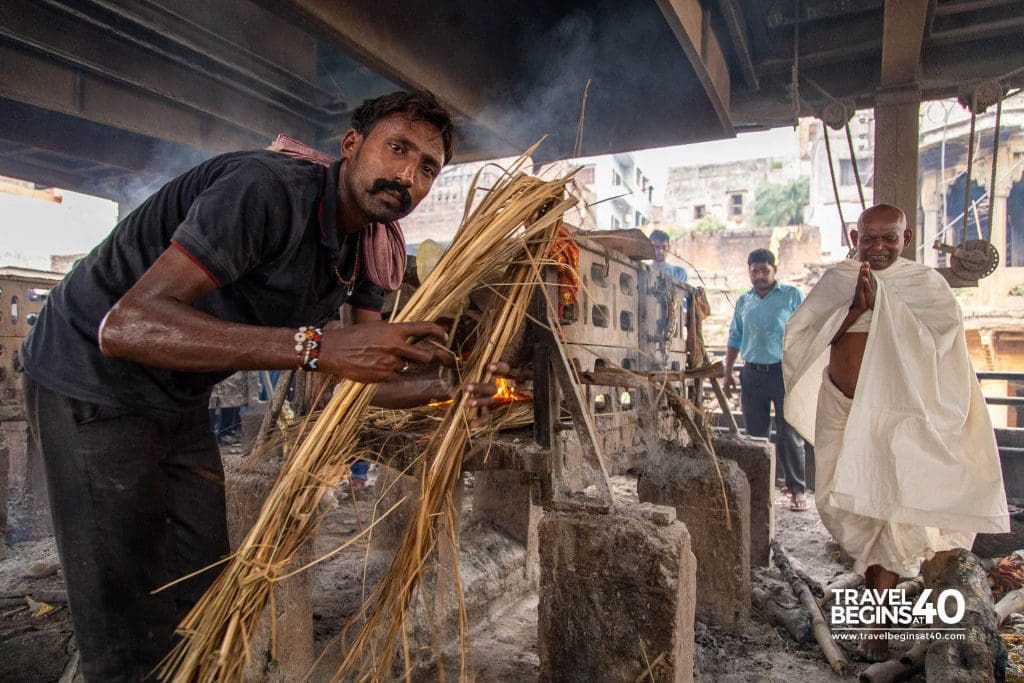
The body takes a large amount of wood to burn, and if a family cannot afford enough wood they will be left with large bones. The poor rely on donations of wood in order to cremate fully the bodies.
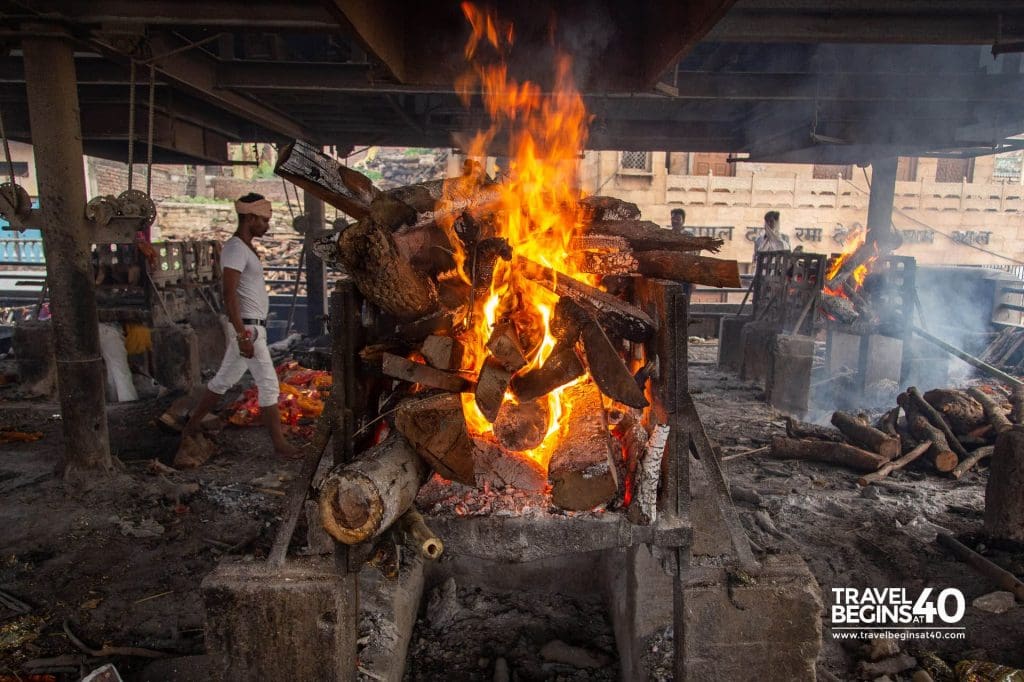
A small amount of sandalwood is added to each pyre to mask any unpleasant aroma. It works – the smell eminating from the burning wood is very neutral, especially considering you are up close to burning flesh and bone.
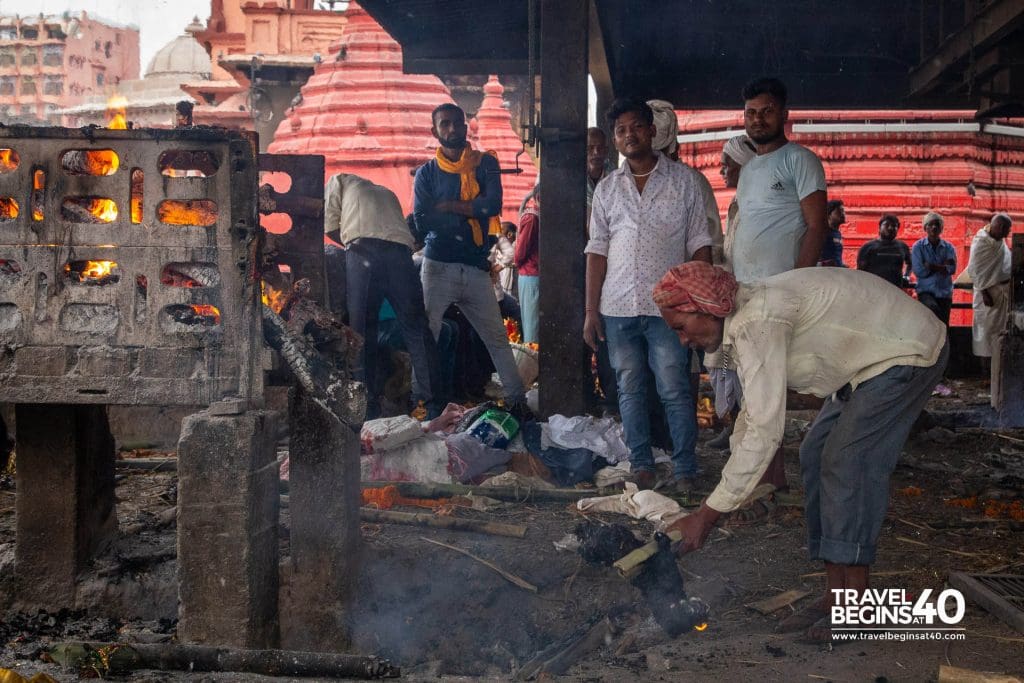
Manikarnika Ghat: Burning Ghat
When the river level is lower cremations are also performed on the ghat steps below. Manikarnika Ghat is the main burning ghat in Varanasi. It lies just to the north of the large Dashashwamedh. Manikarnika Ghat uses only wood in cremations, sticking strictly to the old traditions. Maharaja Harishchandra Ghat to the south also has an electric cremation area in addition to traditional wood pyres outside.
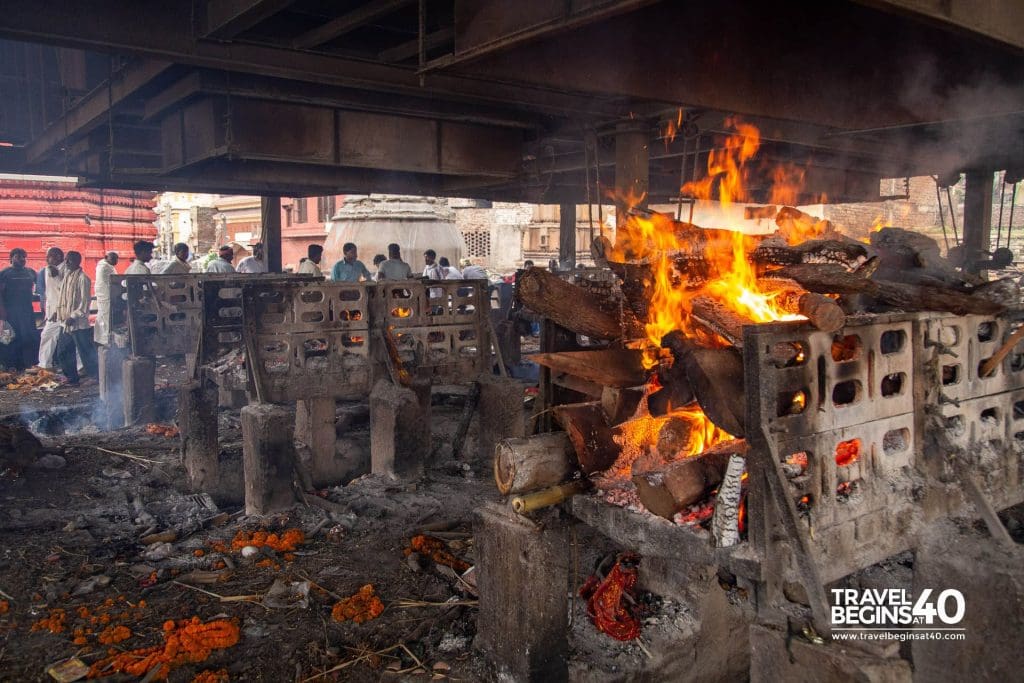
Not all people are cremated. Young children, pregnant women, and the holy Saddhus are already considered pure so do not need to be purified with fire. Those sick with leprosy are also not cremated, believing that the Ganges waters will purify the infected body. In these cases the corpses are tied to large rocks and dropped in the middle of the river.
Photography at the Burning Ghats of Varanasi
Photography is typically not permitted at the burning ghats. If you even think about raising your camera you will be quickly and firmly told off. I arrived early, just after the morning Ganga Aarti ceremony and at this hour it was possible to obtain permission to photograph with the help of a local called Raj and a small donation. Raj guided me as to where and when I could photograph, showed me key moments in the cremation rituals and gave insight into the beliefs. He said he could be found in the southwest corner of the cremation area at Manikarnika Ghat. It is easier to obtain “unofficial” permission either early on the morning or late in the evening. During the day the area is more crowded and you will have to obtain official documents from the police – which would be significantly more costly and time consuming. Even if you obtain permission you must still be respectful to the families in mourning.
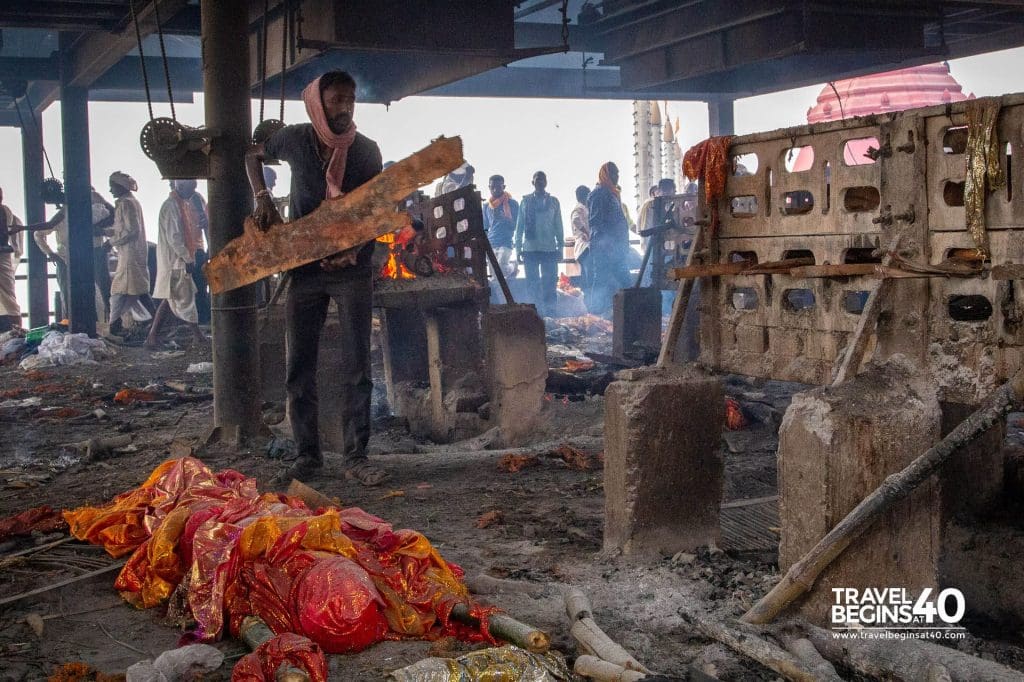
When to visit the burning ghats in Varanasi?
The cremations are performed 24 hours a day, 365 days a year, with over 200 bodies being burned every day. So while the cremations never stop, the weather does affect the best time to visit Varanasi. We visited when the river was still a bit high, just a few weeks after the city was flooding. It may have been better if the water levels were lower to reveal more of the ghats, giving more space for the rituals to be performed outside. The monsoon season finishes around September, so visiting late October onwards would be ideal. The temperatures also start to cool down at this time, though the air quality can start to decline in the winter due to burning fields in the region.
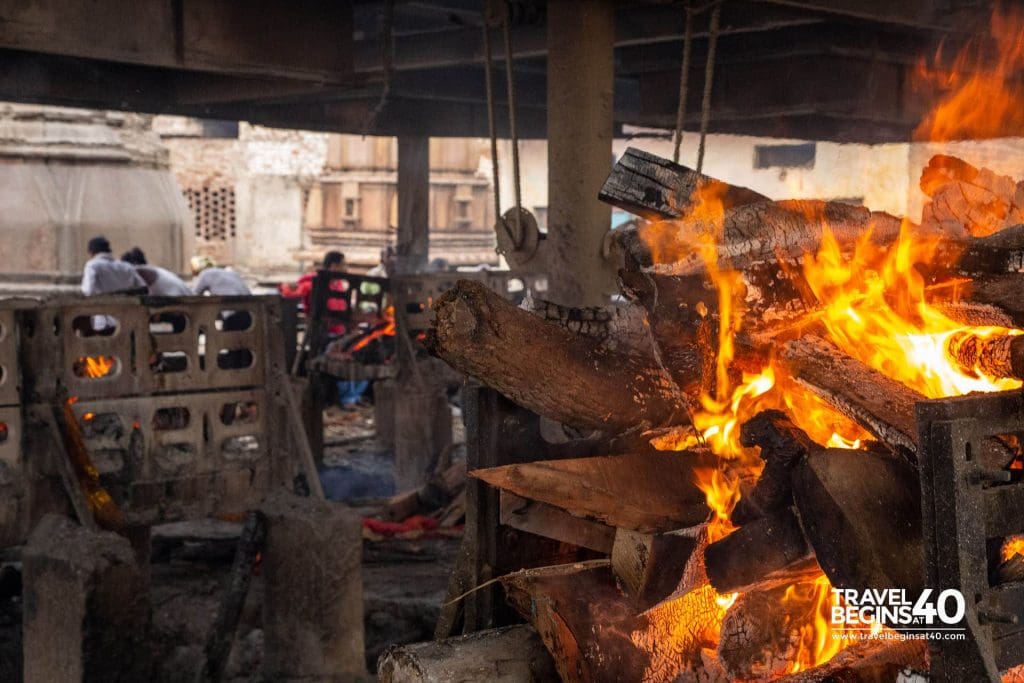
All photos by Joe Ogden.
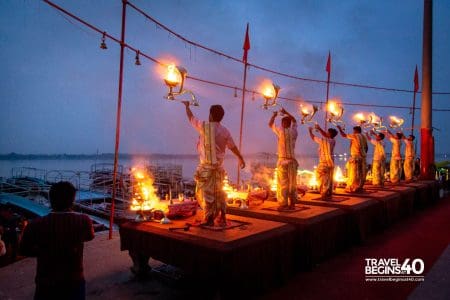
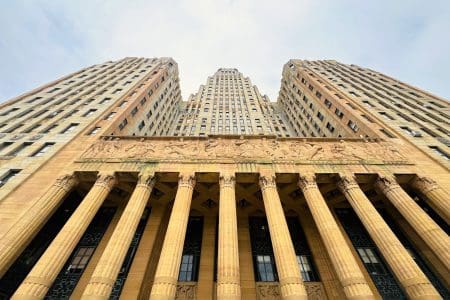
Photography is prohibited because it’s disrespectful, and some Hindus believe it will interfere with a soul’s entry into Nirvana. The fact that some dude took your money and told you that you had “permission” does not change that.
Fair point. I was told it was a donation for wood for families that couldn’t afford enough wood to completely burn the body. Perhaps it hinders one soul but helps another. Good or bad it is commonly arranged with the authorities for media and documentary purposes.